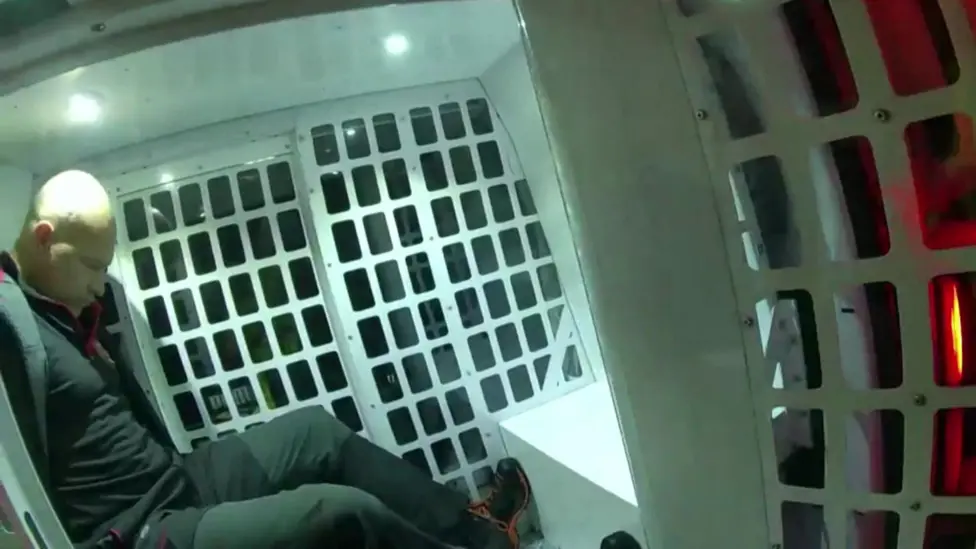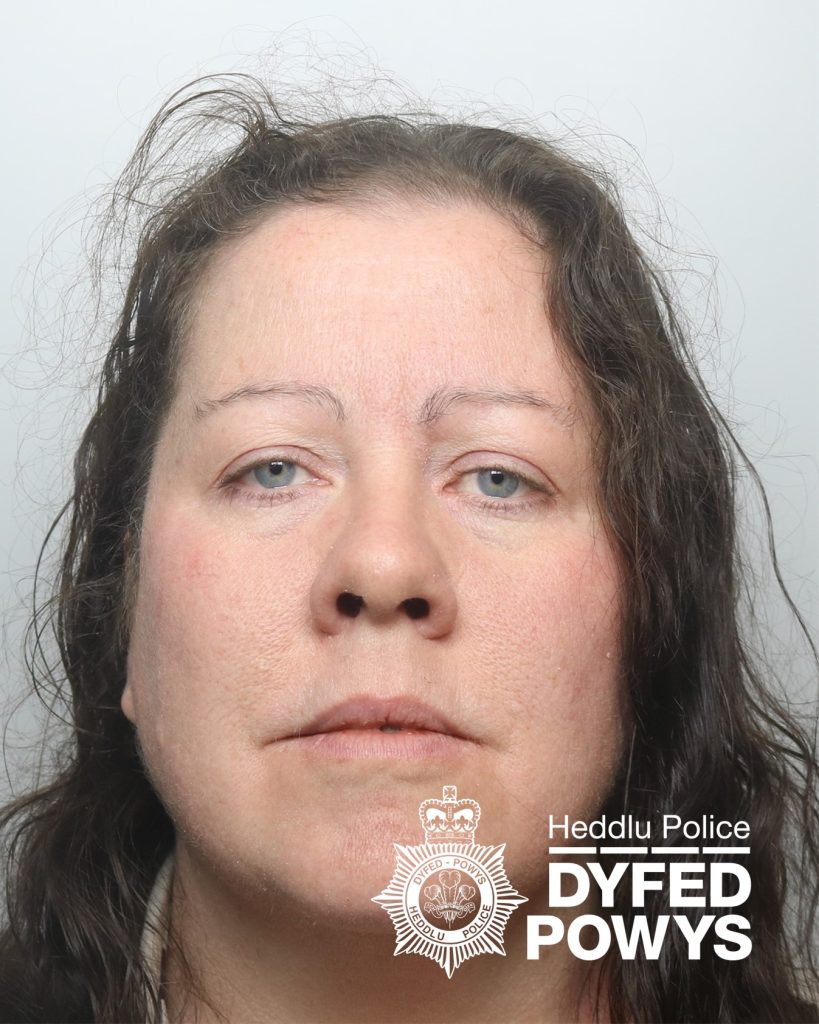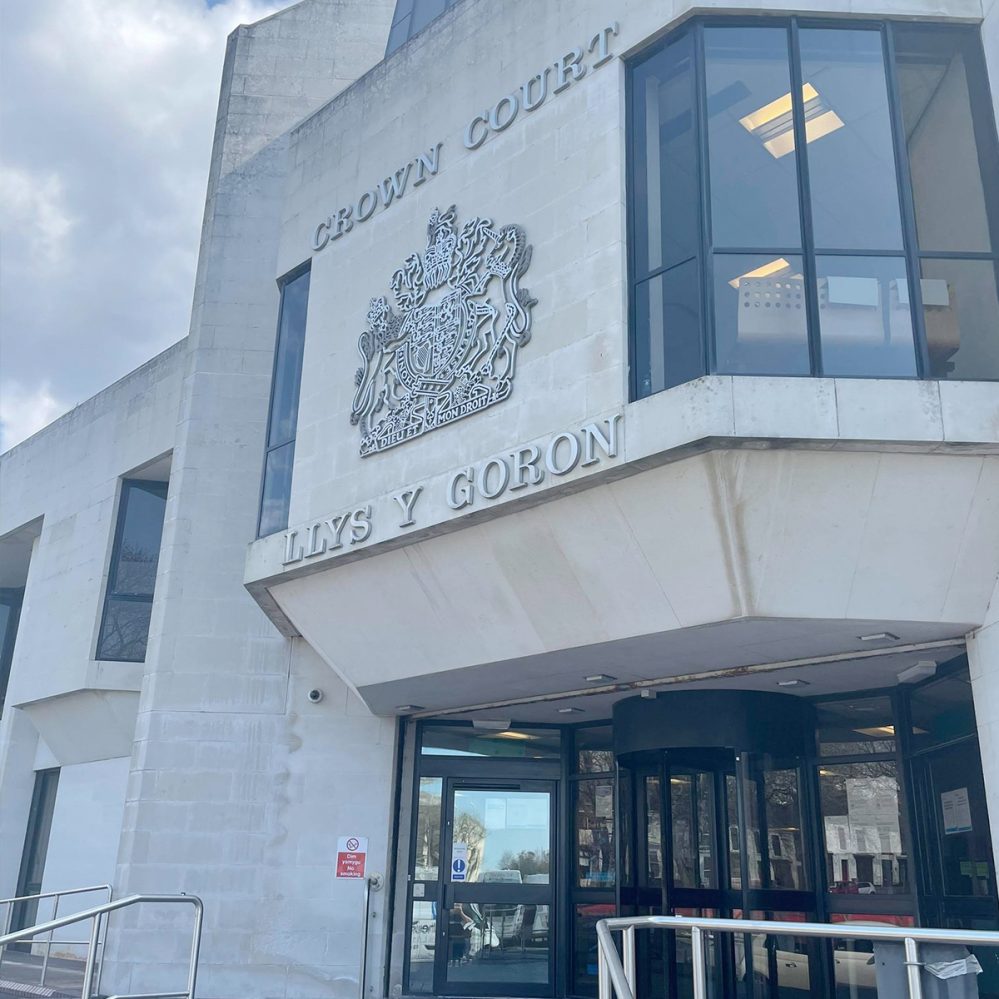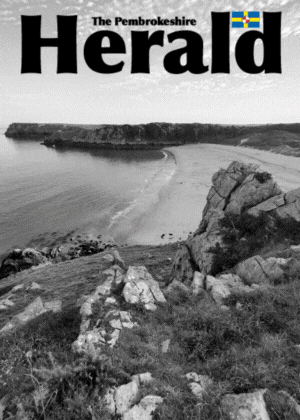News
Letter controversy overshadows consultation


Sixth form consultation to restart: Pembrokeshire College waits for students
A LETTER from the principal of Pembrokeshire College, Sharron Lusher, to Council Chief Ian Westley has raised the spectre that the Welsh Government has already made a provisional decision on sixth form reorganisation in Pembrokeshire.
The purpose of the primary legislation setting out the law and regulations covering such reorganisation is that decisions are taken locally, with the Welsh Government making an independent final decision on all proposals affecting both Welsh Medium Education and sixth forms. Any sense that the Welsh Government has indicated a preference for one proposal over another would be lethal for the integrity of the whole process.
The letter, dated September 24, 2015 responds to a request that the College consider a compromise in order to try and resolve the complications that had arisen in respect of the site of Tasker-Milward School.
The letter states: “[… ]The Welsh Government has made clear their preferred solution. The College concurs with the […] Welsh Government that the proposals which have been promulgated by the Council, are the optimum solution for the County.”
The letter concludes: “The County Council in their deliberations should recognise that the compromise is suboptimal. For this reason, the Welsh Government (who have made clear their preferred solution) may not be in agreement from both an educational and financial perspective”.
We sent a copy of the letter to the Welsh Government and suggested that its content showed that far from being a disinterested party the Welsh Government has essentially directed and predetermined the outcome of any reorganisation.
Setting aside the fact that the reference to the recommendation made by the external experts’ report, we asked the Minister to comment on precisely what ‘preferred solution’ the Welsh Government has intimated it wants.
We invited the Welsh Government to make an unconditional disavowal of the letter’s content and to deny that at any stage it has told either Pembrokeshire College or Pembrokeshire County Council that it has a ‘preferred solution’.
And a Welsh Government spokesperson obliged: “The Welsh Government has consistently made clear in its communications with all parties that this is a decision for the local authority. We do not have a ‘preferred solution’ nor have we predetermined the outcome. This has been reiterated by the Welsh Government in all relevant meetings as each proposal is assessed at the appropriate time based on the evidence provided.
“Given the Minister’s role in the statutory process, it would be inappropriate to comment on the merits of any reorganisation proposals.”
Following the unconditional nature of the Welsh Government’s response, we wrote to College Principal Sharron Lusher and asked her to explain why the content of the letter was mutually exclusive with the Welsh Government statement.
The Principal responded saying: “For the avoidance of doubt, the position of the Welsh Government regarding reorganisation, set out in the statement from Huw Lewis’ office, confirms our understanding. This understanding has not changed and the reference in my letter to Ian Westley does not contradict that understanding.
“As you are aware, the context for the letter is Pembrokeshire County Council seeking a compromise solution with the Trustees of the Tasker Milward and Picton Charity, which would allow the development of a new school on the Tasker Milward site. Pembrokeshire College’s Principal and Chairman were invited to a meeting by Ian Westley on 17th September 2015, at which we were asked to consider potential solutions for the co-location of facilities.
“The reference in my letter to a ‘preferred solution’ is in this context. In discussions on governance structures for potential solutions, the Welsh Government has emphasised that any solution should minimise the duplication of activity. This was clarified fully in the meeting with Ian Westley referred to in my letter, hence the references to ‘sub optimal’ solutions, which could arise if co-location resulted in duplicated activities.”
It seems peculiar that the interpretation placed upon the letter by Ms Lusher was not duplicated in the response from the Welsh Government. Had the Welsh Government’s input merely been as Ms Lusher suggests, the question arises as to why it did not say so for itself. In addition, Ms Lusher’s comment as to what constituted the limited nature of the Welsh Government’s preferred solution leaves two questions open:
Firstly, what was the Welsh Government doing expressing any preference in a consultation in which it is supposed to take no part at all, even on the limited basis Ms Lusher suggests?
Ms Lusher’s words are suggestive of an element of foresight on the Welsh Government’s part about a decision to be made by the local authority entirely independently of both the College and the Government. The arrangements for governance post-reorganisation are part of the public consultation, not something to be the subject of a ‘preferred solution’ by the department supposed to determine it.
Secondly, and it follows from the first question and flows from the context in which the letter was sent, what other input about the mechanics of reorganisation post-consultation has the Welsh Government had?
Even the least bad answer, that the letter’s author and the Welsh Government are at cross purposes as to what constitutes ‘a preferred solution’, leaves both the College (or at least Ms Lusher) and the Welsh Government in a difficult position.
Both Ms Lusher’s letter and her subsequent statement allow the reasonable inference to be drawn that, in the context of the proposals and counter-proposals made in a live consultation, the Welsh Government made clear its ‘preferred solution’ in respect of their resolution, or at least one element to be resolved. Ms Lusher’s statement this week does nothing to conclude that issue: it is at least arguable it makes the position worse by making it clear – beyond doubt – that the Welsh Government did intervene at a crucial juncture and told the Council what it wanted.
And that goes to the heart of the good faith of the whole process: and that includes the process involving Ysgol Bro Gwaun and Ysgol Dewi Sant.
Both Ms Lusher’s letter and her response to this newspaper fatally undermine the Welsh Government’s contrary statement.
That is, if one accepts Ms Lusher’s words at their face value.
Or, indeed, those of the Welsh Government.
The Council is meeting next Thursday to discuss the next steps for the troubled consultation.
News
Bishop Richard Moth appointed Archbishop of Westminster

New Catholic leader for England and Wales to work closely with Welsh dioceses
BISHOP Richard Moth has been appointed Archbishop of Westminster, the most senior Catholic role covering England and Wales.
The appointment was confirmed by the Vatican, with Bishop Moth paying tribute to his predecessor and outlining his priorities as he prepares to take up the post.
He said: “I am moved greatly by the trust that Pope Leo has placed in me, in appointing me to the Diocese of Westminster. As I prepare to move to the Diocese, I am so grateful for the support being given to me by Cardinal Vincent Nichols at this time. He has given dedicated service to the Diocese and will be missed greatly.”
Reflecting on his current role, Bishop Moth said serving the Diocese of Arundel and Brighton over the past ten years had been a “wonderful opportunity” to share the Church’s mission with both clergy and lay faithful.
“My first task will be to get to know the priests and people of Westminster and I look forward, now, to serving them,” he said. “With them, and building on the firm foundations that have been laid by so many down the years, I look forward to continuing the great adventure that is the life of the Church and witness to the Gospel.”
In Wales, the Catholic Church is organised through the dioceses of Cardiff, Wrexham and Menevia. As Archbishop of Westminster, Bishop Moth will work alongside Welsh bishops to help guide the Church, coordinate national priorities and represent Welsh Catholics on social and ethical matters.
He succeeds Cardinal Vincent Nichols, who has retired after more than ten years in the role.
Bishop Moth is widely known for his emphasis on welcoming and inclusion within the Church. He has encouraged parishes to support vulnerable people, including those affected by the criminal justice system, and to help migrants and refugees feel part of local communities.
As Chair of the Bishops’ Conference Department for Social Justice, he has backed initiatives such as working with the prison charity Pact to support offenders and their families, celebrating Masses for migrants, and speaking out on issues including child poverty and human dignity.
For Wales, his appointment means a new senior Church figure will help coordinate national priorities while supporting local bishops, who will continue to manage day-to-day diocesan activity. Catholic schools, charities and parish groups across Wales are expected to reflect his focus on inclusion and community engagement in their work.
Bishop Moth is expected to formally take up the role in early 2026.
News
Wife and lover jailed for plot to murder husband to continue affair

A WOMAN and her lover have been jailed after conspiring to murder her husband of ten years so they could continue their affair.
Michelle Mills and Geraint Berry, both aged 46, were each sentenced to 19 years’ imprisonment at Swansea Crown Court after a jury found them guilty of plotting to kill Christopher Mills in a plan intended to make his death appear as a suicide.
The conspiracy was uncovered after Mr Mills, 55, an ex-serviceman, fought back during a late-night ambush at a caravan the couple were staying in at Cenarth, Carmarthenshire, on Friday, September 20, 2024.
Berry, assisted by Steven Thomas, forced entry into the caravan armed with imitation firearms, gas masks and cable ties. A pre-prepared suicide note falsely purporting to have been written by Mr Mills was later recovered by police.
The attack failed when Mr Mills defended himself, managing to disarm the intruders and forcing them to flee on foot.
Armed response officers, police dog units and the National Police Air Service were deployed. Berry and Thomas were arrested shortly afterwards after being spotted hiding in bushes by a police helicopter.

The incident was initially reported to Dyfed-Powys Police by Michelle Mills, who claimed to be unaware of any motive for her husband to be targeted. At first, officers treated the matter as an aggravated burglary.
However, detectives quickly became suspicious.
Detective Inspector Sam Gregory, of Ceredigion CID said: “We had a report of two masked men attempting to gain access to a caravan and assaulting the owner. On the surface, it appeared the case would be fairly straightforward.
“However, when Berry and Thomas were searched, officers found gas masks, imitation firearms and, most disturbingly, a typed suicide note said to have been written by Christopher Mills.”

The investigation was escalated to CID, where digital forensic enquiries uncovered extensive communication between Mrs Mills and Berry revealing a long-running affair and detailed plans to murder her husband.
Messages exchanged from August 2024 onwards showed the pair discussing multiple methods of killing Mr Mills, including suffocating him while he slept, overdosing him on sleeping tablets, poisoning his food with antifreeze or foxglove, and staging an explosion in his car.
Berry also contacted an associate asking how to obtain a firearm with a suppressor and how to make a vehicle explode when the ignition was started.
The court heard there were two aborted attempts to ambush Mr Mills at the caravan on August 28 and 29, with Berry injuring his knee during one failed attempt.
On the third attempt, Mrs Mills told Berry she would encourage her husband to drink alcohol so he would fall asleep. Messages showed Berry informing her he had arrived at the holiday park moments before the attackers burst into the caravan.

Immediately after the men fled, Mrs Mills sent Berry messages urging him to escape, delete communications and expressing affection, despite her husband having just been assaulted.
Mrs Mills was later arrested at her home in Maes Ty Gwyn, Llwynhendy. Despite denying involvement, she told an arresting officer she would be “going to jail for this”.
DI Gregory said: “From start to finish, Mrs Mills denied any involvement. She initially claimed she did not know the attackers, and later said she believed the messages were just fantasy.
“At no point did she attempt to stop Berry or tell him she did not want the plans to go ahead. Her only concern was not getting caught.”
Sentencing the pair, Mr Justice Nicklin said the plot involved “significant planning and premeditation”, despite being “poorly executed”, and placed Mr Mills’ life at genuine risk.
The court heard victim impact evidence describing how the attack had “pretty much ruined” Mr Mills’ life, leaving him suffering flashbacks and long-term psychological harm.

Mrs Mills was also sentenced to 18 months’ imprisonment for perverting the course of justice, to be served concurrently with her 19-year sentence. Berry received a concurrent 18-month sentence for possession of an imitation firearm.
Steven Thomas, aged 47, of Clos Coffa, Clydach, was found not guilty of conspiracy to murder but had previously admitted possessing a firearm with intent to cause Christopher Mills to believe unlawful violence would be used against him. He was sentenced to 12 months in custody, with time already served on remand taken into account.
The judge said there had been an element of coercion or exploitation by Berry in relation to Thomas, who expressed remorse for his actions.
DI Gregory added: “It is easy to focus on the dramatic details of this case and forget there is a real victim. Mr Mills’ life was genuinely at risk, and the person he should have been able to trust the most was behind the plot.
“He has shown remarkable strength and courage throughout this investigation, and I hope he can now move forward and begin to process what he has endured.
“Despite their claims that this was fantasy, the evidence showed the conspiracy was real, calculated and repeated. Mills and Berry showed no remorse for the devastation they caused.”
Crime
Milford Haven man denies child sex charges as trial date set


A MAN originally from Milford Haven has pleaded not guilty to a series of sexual offences involving a child after recently moving to Cornwall.
James Kershaw, aged 45, formerly of Milford Haven and now living in Quethiock, Cornwall, appeared in court on Friday (Dec 19), where he denied all four sexual charges put to him.
The hearing was his first Crown Court appearance in the case, during which a trial date was fixed for October 5.
Kershaw was allowed to remain on bail under strict conditions, including that he must have no contact with any prosecution witnesses.
Kershaw appeared via video link from his solicitor’s office in Cornwall. The judge described this as “a very generous decision by the listings officer” and said it had “presumably been arranged due to the distance from you to the court”.
Allegations denied
The charges relate to alleged incidents said to have taken place in Liskeard, Cornwall, between October 26 and November 1, 2023.
Kershaw is accused of engaging in sexual communication with a child under the age of 16 and of causing a child aged 13 to watch sexual activity. He also faces two allegations of causing or inciting a girl aged 13 to engage in sexual activity of a non-penetrative nature on separate dates.
In addition, Kershaw is charged with two counts of breaching a Sexual Harm Prevention Order imposed by Derby Crown Court in May 2022. These allegations include the use of an undisclosed Facebook account and the deletion of messages, both of which are said to be prohibited under the terms of that order.
Kershaw denies all allegations.
The court ordered that Kershaw may remain on bail pending trial, subject to conditions including a strict ban on contacting any witnesses.
The complainant’s identity is protected by law under the Sexual Offences (Amendment) Act 1992.
The case is due to return to court when the trial begins in October.
-

 Crime2 days ago
Crime2 days agoMilford Haven man jailed after drunken attack on partner and police officers
-

 News5 days ago
News5 days agoDyfed-Powys Police launch major investigation after triple fatal crash
-

 Crime2 days ago
Crime2 days agoTeenager charged following rape allegation at Saundersfoot nightclub
-

 Crime3 days ago
Crime3 days agoMan charged with months of coercive control and assaults
-

 Crime4 days ago
Crime4 days agoMan sent to Crown Court over historic indecent assault allegations
-

 Crime6 days ago
Crime6 days agoMan spared jail after baseball bat incident in Milford Haven
-

 Crime4 days ago
Crime4 days agoMilford Haven man admits multiple offences after A477 incident
-

 Crime3 days ago
Crime3 days agoWoman ‘terrified in own home’ after ex breaches court order






















Indianref
November 15, 2025 at 3:34 pm
indian chemist: buy medicines online india – Indiava Meds
ZacharyUsemy
November 18, 2025 at 9:16 am
https://aeromedsrx.com/# AeroMedsRx
Davidler
November 18, 2025 at 4:27 pm
fast delivery Kamagra pills: buy Kamagra online – kamagra oral jelly
KennethObesk
November 18, 2025 at 4:35 pm
AeroMedsRx: Viagra Tablet price – Cheap Viagra 100mg
TristanHop
November 18, 2025 at 5:16 pm
Generic Viagra for sale [url=http://aeromedsrx.com/#]AeroMedsRx[/url] order viagra
ZacharyUsemy
November 18, 2025 at 6:01 pm
https://bluewavemeds.com/# fast delivery Kamagra pills
Davidler
November 18, 2025 at 9:32 pm
Viagra Tablet price: AeroMedsRx – viagra canada
TristanHop
November 18, 2025 at 10:26 pm
over the counter sildenafil Cheap Sildenafil 100mg AeroMedsRx
ZacharyUsemy
November 18, 2025 at 10:38 pm
https://aeromedsrx.xyz/# Buy generic 100mg Viagra online
Israeloness
November 19, 2025 at 1:32 am
https://bluewavemeds.com/# order Kamagra discreetly
KennethObesk
November 19, 2025 at 2:23 am
Generic Cialis price: cialis for sale – EveraMeds
Davidler
November 19, 2025 at 2:33 am
AeroMedsRx: AeroMedsRx – Cheap generic Viagra online
TristanHop
November 19, 2025 at 3:43 am
Viagra online price cheapest viagra AeroMedsRx
Davidler
November 19, 2025 at 8:45 am
Generic Cialis price: EveraMeds – EveraMeds
TristanHop
November 19, 2025 at 10:02 am
Cialis over the counter cialis for sale EveraMeds
Israeloness
November 19, 2025 at 10:25 am
https://bluewavemeds.com/# kamagra oral jelly
Davidler
November 19, 2025 at 3:14 pm
Cheap Sildenafil 100mg: AeroMedsRx – generic sildenafil
ZacharyUsemy
November 19, 2025 at 3:51 pm
https://bluewavemeds.com/# kamagra oral jelly
KennethObesk
November 19, 2025 at 5:11 pm
Buy Tadalafil 5mg: Cialis 20mg price – EveraMeds
Israeloness
November 19, 2025 at 7:52 pm
https://everameds.com/# EveraMeds
Davidler
November 19, 2025 at 9:32 pm
Buy Viagra online cheap: AeroMedsRx – buy viagra here
ZacharyUsemy
November 19, 2025 at 9:56 pm
https://everameds.xyz/# EveraMeds
TristanHop
November 19, 2025 at 10:56 pm
AeroMedsRx [url=https://aeromedsrx.xyz/#]AeroMedsRx[/url] AeroMedsRx
Davidler
November 20, 2025 at 3:58 am
cialis for sale: EveraMeds – Cialis without a doctor prescription
ZacharyUsemy
November 20, 2025 at 4:14 am
http://everameds.com/# EveraMeds
Israeloness
November 20, 2025 at 5:04 am
https://aeromedsrx.com/# Generic Viagra for sale
TristanHop
November 20, 2025 at 5:29 am
Buy Tadalafil 20mg EveraMeds EveraMeds
Davidler
November 20, 2025 at 10:05 am
EveraMeds: EveraMeds – Generic Tadalafil 20mg price
ZacharyUsemy
November 20, 2025 at 10:09 am
https://bluewavemeds.xyz/# fast delivery Kamagra pills
TristanHop
November 20, 2025 at 11:32 am
AeroMedsRx Viagra online price AeroMedsRx
Davidler
November 20, 2025 at 3:46 pm
fast delivery Kamagra pills: Blue Wave Meds – fast delivery Kamagra pills
ZacharyUsemy
November 20, 2025 at 3:48 pm
https://everameds.xyz/# EveraMeds
TristanHop
November 20, 2025 at 5:20 pm
order Kamagra discreetly trusted Kamagra supplier in the US BlueWaveMeds
ZacharyUsemy
November 20, 2025 at 9:24 pm
http://everameds.com/# EveraMeds
Davidler
November 20, 2025 at 9:29 pm
over the counter sildenafil: Viagra generic over the counter – AeroMedsRx
KennethObesk
November 20, 2025 at 10:48 pm
Viagra Tablet price: AeroMedsRx – Viagra without a doctor prescription Canada
TristanHop
November 20, 2025 at 11:06 pm
EveraMeds Buy Tadalafil 10mg Cialis without a doctor prescription
ZacharyUsemy
November 21, 2025 at 2:54 am
http://everameds.com/# EveraMeds
Davidler
November 21, 2025 at 3:04 am
viagra without prescription: over the counter sildenafil – generic sildenafil
Davidler
November 21, 2025 at 8:24 am
kamagra: order Kamagra discreetly – trusted Kamagra supplier in the US
TristanHop
November 21, 2025 at 10:07 am
Tadalafil price Tadalafil Tablet Buy Tadalafil 5mg
KennethObesk
November 21, 2025 at 1:41 pm
Buy Cialis online: EveraMeds – Cialis without a doctor prescription
TristanHop
November 21, 2025 at 3:39 pm
Buy Tadalafil 5mg [url=https://everameds.com/#]EveraMeds[/url] Cialis over the counter
ZacharyUsemy
November 21, 2025 at 6:58 pm
https://bluewavemeds.xyz/# order Kamagra discreetly
Davidler
November 21, 2025 at 7:21 pm
AeroMedsRx: AeroMedsRx – AeroMedsRx
TristanHop
November 21, 2025 at 9:12 pm
AeroMedsRx AeroMedsRx AeroMedsRx
ZacharyUsemy
November 22, 2025 at 12:15 am
https://aeromedsrx.com/# AeroMedsRx
Davidler
November 22, 2025 at 12:44 am
EveraMeds: EveraMeds – EveraMeds
TristanHop
November 22, 2025 at 2:39 am
fast delivery Kamagra pills kamagra BlueWaveMeds
KennethObesk
November 22, 2025 at 4:12 am
AeroMedsRx: best price for viagra 100mg – AeroMedsRx
ZacharyUsemy
November 22, 2025 at 5:37 am
https://aeromedsrx.com/# best price for viagra 100mg
Davidler
November 22, 2025 at 6:11 am
AeroMedsRx: Buy generic 100mg Viagra online – best price for viagra 100mg
TristanHop
November 22, 2025 at 8:08 am
cheapest viagra AeroMedsRx Cheap Sildenafil 100mg
ZacharyUsemy
November 22, 2025 at 10:55 am
https://everameds.xyz/# Generic Cialis without a doctor prescription
ZacharyUsemy
November 22, 2025 at 4:23 pm
http://aeromedsrx.com/# Viagra generic over the counter
Davidler
November 22, 2025 at 5:06 pm
online pharmacy for Kamagra: kamagra oral jelly – buy Kamagra online
KennethObesk
November 22, 2025 at 6:45 pm
EveraMeds: EveraMeds – Generic Cialis without a doctor prescription
TristanHop
November 22, 2025 at 7:08 pm
EveraMeds EveraMeds Buy Tadalafil 5mg
ZacharyUsemy
November 22, 2025 at 9:44 pm
https://everameds.xyz/# Generic Cialis without a doctor prescription
Davidler
November 22, 2025 at 10:31 pm
AeroMedsRx: AeroMedsRx – AeroMedsRx
TristanHop
November 23, 2025 at 12:36 am
п»їcialis generic [url=https://everameds.xyz/#]Buy Tadalafil 10mg[/url] EveraMeds
ZacharyUsemy
November 23, 2025 at 3:02 am
http://everameds.com/# Generic Cialis price
Davidler
November 23, 2025 at 3:54 am
Viagra online price: Viagra online price – AeroMedsRx
TristanHop
November 23, 2025 at 6:04 am
EveraMeds [url=https://everameds.xyz/#]EveraMeds[/url] EveraMeds
Davidler
November 23, 2025 at 9:17 am
kamagra: order Kamagra discreetly – order Kamagra discreetly
RichardSauct
November 23, 2025 at 2:11 pm
canadian world pharmacy https://isoindiapharm.xyz/# IsoIndiaPharm
Richardhaure
November 23, 2025 at 3:39 pm
http://uvapharm.com/# online pharmacy mexico
HunterVed
November 23, 2025 at 5:00 pm
northwest pharmacy canada: canadian pharmacy no scripts – MhfaPharm
RobertEntes
November 23, 2025 at 5:50 pm
IsoIndiaPharm: IsoIndiaPharm – IsoIndiaPharm
RichardSauct
November 23, 2025 at 6:51 pm
best canadian pharmacy http://uvapharm.com/# UvaPharm
Richardhaure
November 23, 2025 at 8:47 pm
https://isoindiapharm.xyz/# IsoIndiaPharm
ForestCom
November 23, 2025 at 8:58 pm
top online pharmacy india indian pharmacy Iso Pharm
RobertEntes
November 23, 2025 at 10:55 pm
Iso Pharm: indianpharmacy com – online shopping pharmacy india
RichardSauct
November 23, 2025 at 11:26 pm
canada drugs online review https://isoindiapharm.xyz/# Online medicine home delivery
HunterVed
November 23, 2025 at 11:28 pm
Uva Pharm: Uva Pharm – Uva Pharm
Richardhaure
November 24, 2025 at 1:47 am
https://mhfapharm.com/# MHFA Pharm
Richardhaure
November 24, 2025 at 7:10 am
https://isoindiapharm.com/# india pharmacy
ForestCom
November 24, 2025 at 8:07 am
UvaPharm Uva Pharm Uva Pharm
RichardSauct
November 24, 2025 at 9:34 am
pharmacy com canada http://mhfapharm.com/# MhfaPharm
RobertEntes
November 24, 2025 at 9:37 am
indian pharmacy paypal: IsoIndiaPharm – Iso Pharm
HunterVed
November 24, 2025 at 12:19 pm
canadian pharmacy reviews: best canadian pharmacy online – MHFA Pharm
Richardhaure
November 24, 2025 at 12:49 pm
https://mhfapharm.xyz/# MHFA Pharm
RichardSauct
November 24, 2025 at 3:05 pm
legit canadian pharmacy https://uvapharm.com/# Uva Pharm
RobertEntes
November 24, 2025 at 3:14 pm
Uva Pharm: Uva Pharm – mexican online pharmacies
Richardhaure
November 24, 2025 at 6:28 pm
https://mhfapharm.com/# MhfaPharm
RichardSauct
November 24, 2025 at 8:36 pm
canada pharmacy online https://uvapharm.xyz/# mexico pharmacy
RobertEntes
November 24, 2025 at 8:54 pm
IsoIndiaPharm: IsoIndiaPharm – IsoIndiaPharm
ForestCom
November 24, 2025 at 10:33 pm
meds from mexico online mexican pharmacies pharmacy online
Richardhaure
November 25, 2025 at 12:09 am
http://mhfapharm.com/# MHFA Pharm
RichardSauct
November 25, 2025 at 2:08 am
online canadian pharmacy review https://uvapharm.com/# UvaPharm
RobertEntes
November 25, 2025 at 2:36 am
UvaPharm: UvaPharm – UvaPharm
Richardhaure
November 25, 2025 at 6:03 am
https://isoindiapharm.xyz/# top 10 pharmacies in india
RobertEntes
November 25, 2025 at 8:35 am
Iso Pharm: Iso Pharm – Iso Pharm
HunterVed
November 25, 2025 at 11:37 am
IsoIndiaPharm: pharmacy website india – IsoIndiaPharm
RichardSauct
November 25, 2025 at 1:41 pm
canadian pharmacy sarasota http://uvapharm.com/# UvaPharm
RobertEntes
November 25, 2025 at 2:35 pm
my canadian pharmacy: canadian online pharmacy – canadapharmacyonline legit
Richardhaure
November 25, 2025 at 5:51 pm
https://mhfapharm.xyz/# canadian pharmacy world
RichardSauct
November 25, 2025 at 7:16 pm
canadapharmacyonline https://uvapharm.com/# mexican pharmacy
RichardSauct
November 26, 2025 at 12:43 am
the canadian pharmacy http://uvapharm.com/# mexican rx pharm
RobertEntes
November 26, 2025 at 1:50 am
MHFA Pharm: canadian pharmacy price checker – MhfaPharm
ForestCom
November 26, 2025 at 3:10 am
Uva Pharm [url=http://uvapharm.com/#]online pharmacies[/url] order from mexico
Richardhaure
November 26, 2025 at 5:03 am
https://uvapharm.xyz/# Uva Pharm
RichardSauct
November 26, 2025 at 6:14 am
canadian pharmacy 24 com http://mhfapharm.com/# best online canadian pharmacy
Douglasnob
November 26, 2025 at 12:36 pm
PMA Ivermectin: PmaIvermectin – PMA Ivermectin
Patrickponna
November 26, 2025 at 12:39 pm
world pharmacy india https://socalabortionpill.com/# SocalAbortionPill
CharlesPek
November 26, 2025 at 1:47 pm
cost of propecia pill: BSW Finasteride – BSW Finasteride
DavidDer
November 26, 2025 at 1:56 pm
SocalAbortionPill [url=https://socalabortionpill.xyz/#]SocalAbortionPill[/url] Socal Abortion Pill
Patrickponna
November 26, 2025 at 4:59 pm
top online pharmacy india http://uclametformin.com/# UclaMetformin
Douglasnob
November 26, 2025 at 6:48 pm
SocalAbortionPill: Socal Abortion Pill – SocalAbortionPill
CharlesPek
November 26, 2025 at 6:48 pm
buy cytotec: Socal Abortion Pill – buy abortion pills
Patrickponna
November 26, 2025 at 9:36 pm
top 10 online pharmacy in india https://bswfinasteride.com/# get cheap propecia without a prescription
DavidDer
November 26, 2025 at 11:36 pm
Socal Abortion Pill SocalAbortionPill п»їcytotec pills online
CharlesPek
November 26, 2025 at 11:46 pm
nih approved ivermectin: PmaIvermectin – ivermectin 8000 mcg
Douglasnob
November 27, 2025 at 12:51 am
PMA Ivermectin: stromectol tab 3mg – PmaIvermectin
Patrickponna
November 27, 2025 at 2:03 am
online shopping pharmacy india http://pmaivermectin.com/# ivermectin dose for dogs
CharlesPek
November 27, 2025 at 4:39 am
BswFinasteride: BswFinasteride – BSW Finasteride
Patrickponna
November 27, 2025 at 6:54 am
best online pharmacy india https://bswfinasteride.com/# BSW Finasteride
Douglasnob
November 27, 2025 at 7:23 am
BswFinasteride: BswFinasteride – BswFinasteride
CharlesPek
November 27, 2025 at 10:43 am
BSW Finasteride: BswFinasteride – cost of cheap propecia no prescription
DavidDer
November 27, 2025 at 11:15 am
Ucla Metformin online metformin Ucla Metformin
Patrickponna
November 27, 2025 at 12:56 pm
best india pharmacy https://uclametformin.com/# UclaMetformin
CharlesPek
November 27, 2025 at 4:30 pm
UclaMetformin: Ucla Metformin – UclaMetformin
Douglasnob
November 27, 2025 at 4:38 pm
SocalAbortionPill: buy abortion pills – buy cytotec in usa
CharlesPek
November 27, 2025 at 10:31 pm
Ucla Metformin: UclaMetformin – no prescription metformin online
Patrickponna
November 28, 2025 at 12:30 am
indianpharmacy com https://socalabortionpill.xyz/# purchase cytotec
Douglasnob
November 28, 2025 at 1:54 am
buy abortion pills: SocalAbortionPill – Socal Abortion Pill
DavidDer
November 28, 2025 at 2:05 am
metformin coupon pharmacy Ucla Metformin metformin 800
CharlesPek
November 28, 2025 at 4:41 am
UclaMetformin: where can i get metformin without prescription – Ucla Metformin
Joshuavaf
November 28, 2025 at 7:35 am
legal canadian prescription drugs online https://dmucialis.com/# Generic Tadalafil 20mg price
RamonHeilm
November 28, 2025 at 9:49 am
Cialis 20mg price DmuCialis DmuCialis
CialisNAK
November 28, 2025 at 10:50 am
NeoKamagra: NeoKamagra – NeoKamagra
Joshuavaf
November 28, 2025 at 12:19 pm
legal online pharmacies http://muscpharm.com/# buy prescription drugs without doctor
DavidDer
November 28, 2025 at 2:08 pm
http://dmucialis.com/# DmuCialis
CialisNAK
November 28, 2025 at 4:04 pm
Musc Pharm: canada drug pharmacy – MuscPharm
Joshuavaf
November 28, 2025 at 4:59 pm
prescription without a doctor’s prescription https://muscpharm.xyz/# non prescription canadian pharmacy
Dmudum
November 28, 2025 at 6:29 pm
Dmu Cialis: Dmu Cialis – Generic Cialis price
RamonHeilm
November 28, 2025 at 8:12 pm
MuscPharm canada meds largest canadian pharmacy
CialisNAK
November 28, 2025 at 9:21 pm
Musc Pharm: Musc Pharm – Musc Pharm
Joshuavaf
November 28, 2025 at 9:44 pm
nabp canadian pharmacy https://neokamagra.com/# Neo Kamagra
DavidDer
November 28, 2025 at 11:39 pm
http://muscpharm.com/# MuscPharm
RamonHeilm
November 29, 2025 at 1:14 am
Cialis over the counter DmuCialis Cialis 20mg price
Joshuavaf
November 29, 2025 at 2:18 am
mexican border pharmacies https://dmucialis.com/# Dmu Cialis
CialisNAK
November 29, 2025 at 2:24 am
Musc Pharm: top rated online canadian pharmacies – MuscPharm
Dmudum
November 29, 2025 at 3:28 am
Cialis over the counter: DmuCialis – Dmu Cialis
RamonHeilm
November 29, 2025 at 6:11 am
Kamagra Oral Jelly buy Kamagra Neo Kamagra
Joshuavaf
November 29, 2025 at 6:52 am
online canadian pharmacy no prescription https://neokamagra.xyz/# NeoKamagra
CialisNAK
November 29, 2025 at 7:29 am
Musc Pharm: Musc Pharm – Musc Pharm
DavidDer
November 29, 2025 at 9:10 am
https://neokamagra.xyz/# NeoKamagra
RamonHeilm
November 29, 2025 at 11:03 am
NeoKamagra NeoKamagra buy kamagra online usa
CialisNAK
November 29, 2025 at 12:22 pm
online prescriptions canada without: canada pharmacy online no script – Musc Pharm
Joshuavaf
November 29, 2025 at 3:46 pm
reputable mexican pharmacies online https://dmucialis.xyz/# Generic Cialis price
RamonHeilm
November 29, 2025 at 3:52 pm
MuscPharm MuscPharm MuscPharm
CialisNAK
November 29, 2025 at 5:18 pm
MuscPharm: Musc Pharm – most reliable canadian pharmacies
DavidDer
November 29, 2025 at 6:38 pm
https://neokamagra.com/# Neo Kamagra
RamonHeilm
November 29, 2025 at 8:33 pm
Kamagra 100mg price Neo Kamagra NeoKamagra
CialisNAK
November 29, 2025 at 10:03 pm
discount pharmacies: MuscPharm – Musc Pharm
Joshuavaf
November 30, 2025 at 12:18 am
most trusted canadian online pharmacies https://neokamagra.xyz/# Neo Kamagra
RamonHeilm
November 30, 2025 at 1:06 am
Neo Kamagra NeoKamagra Kamagra 100mg
CialisNAK
November 30, 2025 at 2:39 am
Neo Kamagra: NeoKamagra – Neo Kamagra
DavidDer
November 30, 2025 at 4:11 am
https://neokamagra.com/# cheap kamagra
Joshuavaf
November 30, 2025 at 4:31 am
canadian pharmacies prices http://muscpharm.com/# Musc Pharm
RamonHeilm
November 30, 2025 at 5:38 am
Neo Kamagra Neo Kamagra NeoKamagra
Joshuavaf
November 30, 2025 at 9:23 am
reliable canadian online pharmacy https://muscpharm.com/# Musc Pharm
RamonHeilm
November 30, 2025 at 11:01 am
Neo Kamagra Neo Kamagra NeoKamagra
Joshuavaf
November 30, 2025 at 2:58 pm
online pharmacy https://muscpharm.xyz/# Musc Pharm
Dmudum
November 30, 2025 at 3:50 pm
Dmu Cialis: DmuCialis – DmuCialis
DavidDer
November 30, 2025 at 5:23 pm
https://neokamagra.com/# Neo Kamagra
Joshuavaf
December 1, 2025 at 2:39 am
ed drugs online https://dmucialis.com/# Dmu Cialis
Dmudum
December 1, 2025 at 3:44 am
Neo Kamagra: п»їkamagra – NeoKamagra
CialisNAK
December 1, 2025 at 7:01 am
DmuCialis: Tadalafil price – Dmu Cialis
DavidDer
December 1, 2025 at 8:09 am
http://neokamagra.com/# NeoKamagra
Joshuavaf
December 1, 2025 at 8:27 am
buy mexican drugs online https://neokamagra.com/# NeoKamagra
Dmudum
December 1, 2025 at 9:38 am
NeoKamagra: Neo Kamagra – Kamagra 100mg
DanielGig
December 1, 2025 at 2:15 pm
Cor Pharmacy: pharmacy express – CorPharmacy
SteveKah
December 1, 2025 at 3:04 pm
most trusted canadian online pharmacies https://corpharmacy.xyz/# CorPharmacy
CharlesAbnow
December 1, 2025 at 4:14 pm
https://viagranewark.com/# ViagraNewark
Jamescen
December 1, 2025 at 5:09 pm
Cor Pharmacy: Cor Pharmacy – online pharmacy weight loss
Williamves
December 1, 2025 at 7:07 pm
Ed Pills Afib [url=http://edpillsafib.com/#]best online ed meds[/url] best ed pills online
DanielGig
December 1, 2025 at 8:00 pm
Viagra Newark: sildenafil 50 mg price – sildenafil over the counter
SteveKah
December 1, 2025 at 8:09 pm
my canadian pharmacy rx reviews https://viagranewark.com/# Viagra Newark
Jamescen
December 1, 2025 at 10:53 pm
rx pharmacy no prescription: Cor Pharmacy – Cor Pharmacy
Williamves
December 2, 2025 at 12:29 am
Cor Pharmacy real canadian pharmacy Cor Pharmacy
SteveKah
December 2, 2025 at 12:59 am
fda approved canadian online pharmacies https://corpharmacy.com/# canadian pharmacy world coupon code
CharlesAbnow
December 2, 2025 at 2:17 am
http://viagranewark.com/# Viagra Newark
Jamescen
December 2, 2025 at 4:15 am
Ed Pills Afib: cheap ed – cheap boner pills
SteveKah
December 2, 2025 at 6:21 am
best canadian pharmacy https://corpharmacy.xyz/# Cor Pharmacy
DanielGig
December 2, 2025 at 9:51 am
Viagra online price: Viagra Newark – Viagra online price
Jamescen
December 2, 2025 at 11:04 am
CorPharmacy: online pharmacy indonesia – CorPharmacy
Williamves
December 2, 2025 at 1:01 pm
Ed Pills Afib ed rx online EdPillsAfib
SteveKah
December 2, 2025 at 1:17 pm
online pharmacies in canada https://corpharmacy.xyz/# online pharmacy uk
DanielGig
December 2, 2025 at 5:02 pm
ViagraNewark: ViagraNewark – ViagraNewark
CharlesAbnow
December 2, 2025 at 5:08 pm
https://corpharmacy.xyz/# discount pharmacy
Jamescen
December 2, 2025 at 6:06 pm
top rated ed pills: Ed Pills Afib – Ed Pills Afib
Williamves
December 2, 2025 at 7:54 pm
Viagra Newark ViagraNewark Cheap Sildenafil 100mg
SteveKah
December 2, 2025 at 8:04 pm
safe canadian pharmacy https://corpharmacy.xyz/# canadian pharmacy
DanielGig
December 3, 2025 at 12:03 am
ed treatment online: cheapest ed medication – online ed treatments
Jamescen
December 3, 2025 at 1:02 am
viagra canada: viagra without prescription – Viagra Newark
Williamves
December 3, 2025 at 2:47 am
Ed Pills Afib [url=https://edpillsafib.xyz/#]erectile dysfunction meds online[/url] buy erectile dysfunction medication
DanielGig
December 3, 2025 at 7:09 am
EdPillsAfib: Ed Pills Afib – order ed pills online
Jamescen
December 3, 2025 at 8:08 am
Ed Pills Afib: online erectile dysfunction pills – ed medications cost
Williamves
December 3, 2025 at 9:42 am
Ed Pills Afib Ed Pills Afib EdPillsAfib
DanielGig
December 3, 2025 at 2:14 pm
ViagraNewark: Cheap generic Viagra – Viagra Newark
Jamescen
December 3, 2025 at 3:09 pm
Cor Pharmacy: Cor Pharmacy – Cor Pharmacy
SteveKah
December 3, 2025 at 4:26 pm
canadian pharmacies top best https://corpharmacy.com/# canadian pharmacy
Williamves
December 3, 2025 at 4:40 pm
Cor Pharmacy [url=https://corpharmacy.com/#]CorPharmacy[/url] vipps canadian pharmacy
DanielGig
December 3, 2025 at 9:22 pm
Viagra Newark: Viagra without a doctor prescription Canada – Viagra Newark
Jamescen
December 3, 2025 at 10:14 pm
cheapest viagra: buy Viagra online – Viagra Newark
CharlesAbnow
December 3, 2025 at 11:17 pm
http://viagranewark.com/# Order Viagra 50 mg online
SteveKah
December 3, 2025 at 11:18 pm
canadian pharmacy shop https://viagranewark.xyz/# ViagraNewark
Williamves
December 3, 2025 at 11:36 pm
brazilian pharmacy online cheapest pharmacy to fill prescriptions without insurance CorPharmacy
DanielGig
December 4, 2025 at 4:30 am
brazilian pharmacy online: capsule online pharmacy – Cor Pharmacy
Jamescen
December 4, 2025 at 5:18 am
ViagraNewark: best price for viagra 100mg – ViagraNewark
SteveKah
December 4, 2025 at 6:10 am
prescription drugs online http://edpillsafib.com/# what is the cheapest ed medication
Williamves
December 4, 2025 at 6:35 am
over the counter sildenafil Viagra Newark ViagraNewark
DanielGig
December 4, 2025 at 11:31 am
ViagraNewark: Viagra Newark – ViagraNewark
SteveKah
December 4, 2025 at 12:58 pm
canadian mail order drugs https://corpharmacy.com/# Cor Pharmacy
CharlesAbnow
December 4, 2025 at 2:05 pm
https://viagranewark.xyz/# ViagraNewark
DanielGig
December 4, 2025 at 6:36 pm
cheapest pharmacy: Cor Pharmacy – legitimate canadian online pharmacies
Jamescen
December 4, 2025 at 7:12 pm
Cor Pharmacy: CorPharmacy – pharmacy express
SteveKah
December 4, 2025 at 7:46 pm
top mail order pharmacies https://corpharmacy.com/# CorPharmacy
Williamves
December 4, 2025 at 8:23 pm
Viagra Newark [url=https://viagranewark.com/#]Viagra Newark[/url] Viagra generic over the counter
DanielGig
December 5, 2025 at 1:32 am
Viagra Newark: Viagra Newark – Viagra Newark
Jamescen
December 5, 2025 at 2:04 am
Ed Pills Afib: Ed Pills Afib – order ed pills online
SteveKah
December 5, 2025 at 2:28 am
pain meds online without doctor prescription https://viagranewark.com/# Viagra Newark
Williamves
December 5, 2025 at 3:13 am
CorPharmacy [url=http://corpharmacy.com/#]CorPharmacy[/url] Cor Pharmacy
CharlesAbnow
December 5, 2025 at 4:38 am
https://edpillsafib.xyz/# Ed Pills Afib
DanielGig
December 5, 2025 at 8:31 am
EdPillsAfib: Ed Pills Afib – where to get ed pills
Jamescen
December 5, 2025 at 8:59 am
Viagra tablet online: ViagraNewark – ViagraNewark
SteveKah
December 5, 2025 at 9:11 am
canadian pharmacies shipping to usa https://corpharmacy.xyz/# Cor Pharmacy
Williamves
December 5, 2025 at 10:07 am
Ed Pills Afib cheap erection pills Ed Pills Afib
DanielGig
December 5, 2025 at 3:38 pm
Viagra Newark: ViagraNewark – Viagra Newark
Jamescen
December 5, 2025 at 4:04 pm
CorPharmacy: CorPharmacy – Cor Pharmacy
SteveKah
December 5, 2025 at 4:06 pm
canada meds https://edpillsafib.com/# cheap erectile dysfunction pills
Williamves
December 5, 2025 at 5:04 pm
Viagra Newark ViagraNewark Viagra online price
CharlesAbnow
December 5, 2025 at 7:06 pm
https://viagranewark.xyz/# Viagra Newark
SteveKah
December 5, 2025 at 10:49 pm
canadian meds without a script https://viagranewark.com/# Generic Viagra for sale
Williamves
December 5, 2025 at 11:58 pm
ViagraNewark sildenafil 50 mg price ViagraNewark
Uofmsiomina
December 6, 2025 at 4:27 am
sildenafil 25: UofmSildenafil – 150 mg sildenafil
RichardCef
December 6, 2025 at 5:06 am
PennIvermectin: stromectol 6 mg dosage – PennIvermectin
Arthurbat
December 6, 2025 at 5:26 am
https://pennivermectin.xyz/# ivermectin 50ml
PhilipDen
December 6, 2025 at 6:14 am
MassAntibiotics buy antibiotics from canada Mass Antibiotics
RobertNum
December 6, 2025 at 7:49 am
https://avtadalafil.xyz/# AvTadalafil
Uofmsiomina
December 6, 2025 at 9:46 am
Over the counter antibiotics pills: Mass Antibiotics – Mass Antibiotics
Arthurbat
December 6, 2025 at 10:20 am
https://pennivermectin.xyz/# stromectol ivermectin
PhilipDen
December 6, 2025 at 11:39 am
Av Tadalafil AvTadalafil buy generic tadalafil online
Uofmsiomina
December 6, 2025 at 3:20 pm
ivermectin for dogs mange: ivermectin 50ml – Penn Ivermectin
Arthurbat
December 6, 2025 at 3:23 pm
https://massantibiotics.xyz/# MassAntibiotics
RichardCef
December 6, 2025 at 6:39 pm
PennIvermectin: PennIvermectin – Stromectol
Arthurbat
December 6, 2025 at 8:14 pm
https://uofmsildenafil.xyz/# UofmSildenafil
Uofmsiomina
December 6, 2025 at 8:39 pm
best online doctor for antibiotics: Mass Antibiotics – buy antibiotics from india
PhilipDen
December 6, 2025 at 10:15 pm
Uofm Sildenafil sildenafil 10 mg tablet UofmSildenafil
Arthurbat
December 7, 2025 at 12:51 am
https://uofmsildenafil.com/# UofmSildenafil
Uofmsiomina
December 7, 2025 at 1:38 am
sildenafil tablets 150mg: buy sildenafil in mexico – sildenafil 50 mg online
PhilipDen
December 7, 2025 at 3:10 am
Mass Antibiotics buy antibiotics for uti cheapest antibiotics
RichardCef
December 7, 2025 at 4:00 am
buy tadalafil cialis: AvTadalafil – Av Tadalafil
Arthurbat
December 7, 2025 at 5:17 am
https://pennivermectin.xyz/# ivermectin dosage for lyme disease
Uofmsiomina
December 7, 2025 at 6:30 am
Penn Ivermectin: stromectol canada – Penn Ivermectin
Arthurbat
December 7, 2025 at 9:46 am
http://pennivermectin.com/# PennIvermectin
Uofmsiomina
December 7, 2025 at 11:22 am
Uofm Sildenafil: sildenafil 100 mg tablets coupon – UofmSildenafil
RobertNum
December 7, 2025 at 12:23 pm
http://uofmsildenafil.com/# buy sildenafil pills
PhilipDen
December 7, 2025 at 12:46 pm
ivermectin 6 mg walgreens cost of stromectol medication Penn Ivermectin
Uofmsiomina
December 7, 2025 at 4:03 pm
buy antibiotics for uti: MassAntibiotics – Mass Antibiotics
PhilipDen
December 7, 2025 at 5:26 pm
Penn Ivermectin Penn Ivermectin Penn Ivermectin
Arthurbat
December 7, 2025 at 6:25 pm
https://massantibiotics.xyz/# buy antibiotics
RobertNum
December 7, 2025 at 9:50 pm
https://massantibiotics.xyz/# buy antibiotics for uti
PhilipDen
December 7, 2025 at 10:08 pm
AvTadalafil Av Tadalafil Av Tadalafil
Arthurbat
December 7, 2025 at 10:43 pm
https://pennivermectin.com/# ivermectin 50 mg
Uofmsiomina
December 8, 2025 at 1:28 am
ivermectin cost uk: stromectol for sale – PennIvermectin
PhilipDen
December 8, 2025 at 2:46 am
PennIvermectin PennIvermectin ivermectin 1% cream generic
Arthurbat
December 8, 2025 at 2:59 am
http://massantibiotics.com/# best online doctor for antibiotics
RichardCef
December 8, 2025 at 4:59 am
ivermectin liquid for dogs: ivermectin generic – goat wormer ivermectin
PhilipDen
December 8, 2025 at 9:16 am
tadalafil 40 mg online india tadalafil Av Tadalafil
Arthurbat
December 8, 2025 at 9:18 am
http://uofmsildenafil.com/# Uofm Sildenafil
RobertNum
December 8, 2025 at 9:26 am
http://avtadalafil.com/# Av Tadalafil
RichardCef
December 8, 2025 at 11:50 am
Penn Ivermectin: PennIvermectin – PennIvermectin
Uofmsiomina
December 8, 2025 at 2:10 pm
tadalafil 5mg canada: tadalafil price – best online tadalafil
Arthurbat
December 8, 2025 at 3:58 pm
https://pennivermectin.com/# ivermectin 500ml
PhilipDen
December 8, 2025 at 4:06 pm
Penn Ivermectin ivermectin gel stromectol usa
RichardCef
December 8, 2025 at 6:43 pm
UofmSildenafil: sildenafil tablet in india – Uofm Sildenafil
Uofmsiomina
December 8, 2025 at 9:02 pm
ivermectin dosing: ivermectin 3 mg tablet dosage – buy stromectol online
Arthurbat
December 8, 2025 at 10:42 pm
https://pennivermectin.xyz/# PennIvermectin
PhilipDen
December 8, 2025 at 11:00 pm
AvTadalafil AvTadalafil tadalafil tablets 20 mg cost
RobertNum
December 9, 2025 at 12:04 am
https://massantibiotics.xyz/# antibiotic without presription
RichardCef
December 9, 2025 at 1:47 am
sildenafil 100mg purchase: UofmSildenafil – online generic sildenafil
Arthurbat
December 9, 2025 at 5:40 am
https://avtadalafil.com/# AvTadalafil
PhilipDen
December 9, 2025 at 6:08 am
UofmSildenafil sildenafil 96743 UofmSildenafil
RichardCef
December 9, 2025 at 8:29 am
herbal equivalent to ivermectin: stromectol cost – PennIvermectin
Fun88bat
December 9, 2025 at 4:53 pm
trang ghi chú liên kết Dabet Vietnam: latest Dabet Vietnam link – Dabet Vietnam official entry
DonaldOpich
December 9, 2025 at 5:43 pm
https://dabet.reviews/# trang ghi chú liên kết Dabet Vietnam
Bryanacciz
December 9, 2025 at 5:43 pm
DarazPlay বর্তমান প্রবেশ পথ DarazPlay ব্যবহার করার বর্তমান ঠিকানা darazplay
JuliusVen
December 9, 2025 at 6:36 pm
https://planbet.sbs/# PLANBET ??????? ?????? ??????
DouglasAmiva
December 9, 2025 at 7:25 pm
updated PLANBET access link: updated PLANBET access link – PLANBET ??????? ?????? ??????
Fun88bat
December 9, 2025 at 10:08 pm
DarazPlay Vietnam current access: DarazPlay Bangladesh official link – DarazPlay রেফারেন্স লিংক Bangladesh
DonaldOpich
December 9, 2025 at 10:26 pm
https://nagad88.top/# Nagad88 updated access link
Bryanacciz
December 9, 2025 at 11:03 pm
planbet PLANBET Bangladesh রেফারেন্স পেজ PLANBET Bangladesh অফিসিয়াল লিংক
DouglasAmiva
December 10, 2025 at 12:51 am
PLANBET Bangladesh ????????? ???: PLANBET ??????? ?????? ?????? – PLANBET ??????? ?????? ??????
DonaldOpich
December 10, 2025 at 3:29 am
https://dabet.reviews/# Dabet Vietnam current access link
Fun88bat
December 10, 2025 at 3:42 am
Fun88 working link for Vietnam: Fun88 updated entry link – Fun88 Vietnam main access page
Bryanacciz
December 10, 2025 at 5:06 am
nagad88 Nagad88 ব্যবহারকারীদের জন্য বর্তমান লিংক Nagad88 Bangladesh official access
JuliusVen
December 10, 2025 at 5:10 am
https://planbet.sbs/# PLANBET working address for Bangladesh
DouglasAmiva
December 10, 2025 at 7:29 am
Nagad88 updated access link: current Nagad88 entry page – nagad88
DonaldOpich
December 10, 2025 at 10:01 am
http://fun88.sale/# Fun88 updated entry link
Fun88bat
December 10, 2025 at 10:35 am
PLANBET এ ঢোকার আপডেটেড লিংক: planbet – PLANBET Bangladesh main access page
Bryanacciz
December 10, 2025 at 12:02 pm
link Dabet hoạt động cho người dùng Việt Nam đường dẫn vào Dabet hiện tại Dabet main access URL
DouglasAmiva
December 10, 2025 at 2:31 pm
Dabet Vietnam official entry: link Dabet ho?t d?ng cho ngu?i dung Vi?t Nam – Dabet updated working link
DonaldOpich
December 10, 2025 at 4:39 pm
http://nagad88.top/# Nagad88 ব্যবহারকারীদের জন্য বর্তমান লিংক
Fun88bat
December 10, 2025 at 5:27 pm
Dabet Vietnam liên kết đang sử dụng: Dabet updated working link – link Dabet hoạt động cho người dùng Việt Nam
Bryanacciz
December 10, 2025 at 6:59 pm
địa chỉ vào Fun88 mới nhất current Fun88 Vietnam URL Fun88 Vietnam official access link
JuliusVen
December 10, 2025 at 7:57 pm
https://darazplay.blog/# DarazPlay latest access address
DouglasAmiva
December 10, 2025 at 9:30 pm
updated PLANBET access link: PLANBET Bangladesh ???????? ???? – PLANBET working address for Bangladesh
DonaldOpich
December 10, 2025 at 11:11 pm
http://darazplay.blog/# DarazPlay latest access address
Fun88bat
December 11, 2025 at 12:15 am
DarazPlay ব্যবহার করার বর্তমান ঠিকানা: DarazPlay latest access address – DarazPlay Bangladesh আপডেটেড লিংক
DouglasAmiva
December 11, 2025 at 4:29 am
darazplay: DarazPlay ??????? ?????? ?? – DarazPlay updated entry link
Fun88bat
December 11, 2025 at 6:59 am
DarazPlay এ ঢোকার জন্য এখনকার লিংক: DarazPlay ব্যবহার করার বর্তমান ঠিকানা – DarazPlay Bangladesh আপডেটেড লিংক
Bryanacciz
December 11, 2025 at 8:44 am
DarazPlay রেফারেন্স লিংক Bangladesh working DarazPlay access page working DarazPlay access page
JuliusVen
December 11, 2025 at 10:24 am
https://fun88.sale/# trang tham chi?u Fun88 Vietnam
DouglasAmiva
December 11, 2025 at 11:26 am
nagad88 ???? ????: Nagad88 latest working link – Nagad88 ??? ??? ???? Bangladesh
DonaldOpich
December 11, 2025 at 12:03 pm
https://planbet.sbs/# updated PLANBET access link
Fun88bat
December 11, 2025 at 1:53 pm
Dabet Vietnam current access link: Dabet Vietnam official entry – Dabet Vietnam official entry
DouglasAmiva
December 11, 2025 at 6:32 pm
lien k?t vao Fun88 cho ngu?i dung Vi?t Nam: fun88 – Fun88 Vietnam lien k?t truy c?p hi?n t?i
DonaldOpich
December 11, 2025 at 6:41 pm
http://planbet.sbs/# updated PLANBET access link
Fun88bat
December 11, 2025 at 8:48 pm
Fun88 Vietnam liên kết truy cập hiện tại: Fun88 working link for Vietnam – link Fun88 Vietnam đang hoạt động
Bryanacciz
December 11, 2025 at 10:42 pm
Dabet Vietnam current access link Dabet Vietnam liên kết đang sử dụng Dabet main access URL
JuliusVen
December 12, 2025 at 12:56 am
https://nagad88.top/# nagad88 ???? ????
DonaldOpich
December 12, 2025 at 1:08 am
http://planbet.sbs/# PLANBET Bangladesh official link
DouglasAmiva
December 12, 2025 at 8:23 am
PLANBET Bangladesh official link: planbet login – PLANBET ??????? ?????? ??????
Fun88bat
December 12, 2025 at 10:19 am
DarazPlay ব্যবহার করার বর্তমান ঠিকানা: DarazPlay এ ঢোকার জন্য এখনকার লিংক – DarazPlay latest access address
Bryanacciz
December 12, 2025 at 12:27 pm
Fun88 working link for Vietnam [url=http://fun88.sale/#]địa chỉ vào Fun88 mới nhất[/url] trang tham chiếu Fun88 Vietnam
DonaldOpich
December 12, 2025 at 2:03 pm
http://nagad88.top/# Nagad88 latest working link
Donaldmog
December 12, 2025 at 4:48 pm
buy AntiDepressants online: fluoxetine – Trazodone
Ralphlurse
December 12, 2025 at 6:48 pm
Hydrochlorothiazide: Lisinopril – Amlodipine
Richardpew
December 12, 2025 at 8:01 pm
https://edpillseasybuy.xyz/# ed medicine
JustinCah
December 12, 2025 at 9:17 pm
Hydrochlorothiazide HeartMedsEasyBuy Lisinopril
Donaldmog
December 12, 2025 at 10:22 pm
Metformin: Insulin glargine – Insulin glargine
Ralphlurse
December 13, 2025 at 12:08 am
Heart Meds Easy Buy: Blood Pressure Meds – Amlodipine
GeraldBer
December 13, 2025 at 12:47 am
https://mentalhealtheasybuy.com/# duloxetine
Richardpew
December 13, 2025 at 12:53 am
https://diabetesmedseasybuy.xyz/# Dapagliflozin
Donaldmog
December 13, 2025 at 3:52 am
EdPillsEasyBuy: ed treatments – cheapest ed medication
JustinCah
December 13, 2025 at 4:39 am
buy ed pills erectile dysfunction cheap erection pills
Ralphlurse
December 13, 2025 at 6:02 am
ed pills for men: erectile dysfunction – ed medicine
Richardpew
December 13, 2025 at 6:42 am
https://edpillseasybuy.com/# ed pills cheap
Donaldmog
December 13, 2025 at 10:36 am
MentalHealthEasyBuy: sertraline – escitalopram
JustinCah
December 13, 2025 at 11:25 am
Blood Pressure Meds buy blood pressure meds Metoprolol
Ralphlurse
December 13, 2025 at 12:36 pm
Dapagliflozin: DiabetesMedsEasyBuy – DiabetesMedsEasyBuy
Richardpew
December 13, 2025 at 1:15 pm
https://heartmedseasybuy.com/# Lisinopril
Donaldmog
December 13, 2025 at 5:19 pm
ed pills: best ed medication online – erectile dysfunction
JustinCah
December 13, 2025 at 6:06 pm
buy diabetes medicine online buy diabetes medicine online Diabetes Meds Easy Buy
Ralphlurse
December 13, 2025 at 7:08 pm
ed medicine: erection pills – ed medicine
Donaldmog
December 14, 2025 at 12:07 am
ed pills cheap: buy ed pills – ed medicine
JustinCah
December 14, 2025 at 12:53 am
Ed Pills Easy Buy best erectile dysfunction pills discount ed meds
Ralphlurse
December 14, 2025 at 1:48 am
DiabetesMedsEasyBuy: DiabetesMedsEasyBuy – Diabetes Meds Easy Buy
Richardpew
December 14, 2025 at 2:34 am
https://mentalhealtheasybuy.xyz/# MentalHealthEasyBuy
GeraldBer
December 14, 2025 at 5:21 am
https://diabetesmedseasybuy.xyz/# Metformin
Donaldmog
December 14, 2025 at 7:01 am
ed online treatment: erection pills – ed pills cheap
JustinCah
December 14, 2025 at 7:45 am
Losartan Metoprolol buy blood pressure meds
Ralphlurse
December 14, 2025 at 8:29 am
ed treatments: EdPillsEasyBuy – EdPillsEasyBuy
Richardpew
December 14, 2025 at 9:13 am
https://edpillseasybuy.com/# ed pills cheap
Donaldmog
December 14, 2025 at 1:49 pm
Empagliflozin: Diabetes Meds Easy Buy – Diabetes Meds Easy Buy
JustinCah
December 14, 2025 at 2:31 pm
DiabetesMedsEasyBuy Empagliflozin Empagliflozin
Richardpew
December 14, 2025 at 3:52 pm
https://edpillseasybuy.com/# ed medicines
GeraldBer
December 14, 2025 at 8:11 pm
https://diabetesmedseasybuy.xyz/# buy diabetes medicine online
Donaldmog
December 14, 2025 at 8:38 pm
Metoprolol: buy blood pressure meds – cheap hydrochlorothiazide
JustinCah
December 14, 2025 at 9:19 pm
Empagliflozin Diabetes Meds Easy Buy buy diabetes medicine online
Ralphlurse
December 14, 2025 at 9:46 pm
duloxetine: duloxetine – fluoxetine
Richardpew
December 14, 2025 at 10:35 pm
https://heartmedseasybuy.xyz/# HeartMedsEasyBuy
JustinCah
December 15, 2025 at 4:13 am
erectile dysfunction Ed Pills Easy Buy low cost ed meds
Ralphlurse
December 15, 2025 at 4:32 am
HeartMedsEasyBuy: Losartan – Metoprolol
Richardpew
December 15, 2025 at 5:21 am
https://diabetesmedseasybuy.com/# Metformin
GeraldBer
December 15, 2025 at 10:52 am
https://heartmedseasybuy.com/# buy blood pressure meds
JustinCah
December 15, 2025 at 11:02 am
Trazodone Trazodone buy AntiDepressants online
Richardpew
December 15, 2025 at 12:02 pm
https://heartmedseasybuy.com/# Amlodipine
Kennethswarf
December 16, 2025 at 3:29 am
pharmacies in mexico that ship to usa: Unm Pharm – mexico pharmacies prescription drugs
Josephlam
December 16, 2025 at 3:36 am
legitimate canadian online pharmacies: Nyu Pharm – escrow pharmacy canada
CraigRuh
December 16, 2025 at 3:53 am
canadian pharmacy store Nyu Pharm canadian mail order pharmacy
MichaelBurgy
December 16, 2025 at 4:46 am
http://unmpharm.com/# safe place to buy semaglutide online mexico
Kennethswarf
December 16, 2025 at 8:26 am
best mexican online pharmacies: Unm Pharm – best online pharmacies in mexico
Josephlam
December 16, 2025 at 8:39 am
Unm Pharm: buy modafinil from mexico no rx – sildenafil mexico online
Delmarreist
December 16, 2025 at 9:51 am
https://unmpharm.xyz/# reputable mexican pharmacies online
CraigRuh
December 16, 2025 at 11:28 am
п»їlegitimate online pharmacies india buy prescription drugs from india mail order pharmacy india
Josephlam
December 16, 2025 at 1:41 pm
Umass India Pharm: mail order pharmacy india – buy medicines online in india
MichaelBurgy
December 16, 2025 at 1:52 pm
https://unmpharm.xyz/# cheap cialis mexico
Kennethswarf
December 16, 2025 at 6:23 pm
best online pharmacies in mexico: buying from online mexican pharmacy – buying from online mexican pharmacy
MichaelBurgy
December 16, 2025 at 6:30 pm
https://umassindiapharm.xyz/# Online medicine order
Delmarreist
December 16, 2025 at 7:32 pm
http://unmpharm.com/# Unm Pharm
MichaelBurgy
December 16, 2025 at 11:03 pm
http://umassindiapharm.com/# Umass India Pharm
Kennethswarf
December 16, 2025 at 11:17 pm
reputable indian online pharmacy: Umass India Pharm – Umass India Pharm
Josephlam
December 16, 2025 at 11:43 pm
Unm Pharm: sildenafil mexico online – Unm Pharm
MichaelBurgy
December 17, 2025 at 3:37 am
https://nyupharm.xyz/# canadian pharmacy
CraigRuh
December 17, 2025 at 3:45 am
Umass India Pharm Umass India Pharm Umass India Pharm
Kennethswarf
December 17, 2025 at 4:12 am
mexico drug stores pharmacies: Unm Pharm – Unm Pharm
Josephlam
December 17, 2025 at 4:41 am
buy from mexico pharmacy: Unm Pharm – Unm Pharm
Delmarreist
December 17, 2025 at 5:10 am
http://nyupharm.com/# canadian pharmacy sarasota
MichaelBurgy
December 17, 2025 at 8:35 am
https://nyupharm.xyz/# legal to buy prescription drugs from canada
Kennethswarf
December 17, 2025 at 9:47 am
pharmacy website india: Umass India Pharm – best india pharmacy
Josephlam
December 17, 2025 at 10:30 am
ed drugs online from canada: Nyu Pharm – real canadian pharmacy
MichaelBurgy
December 17, 2025 at 3:11 pm
http://unmpharm.com/# Unm Pharm
Kennethswarf
December 17, 2025 at 4:23 pm
medication from mexico pharmacy: medicine in mexico pharmacies – buying prescription drugs in mexico
Josephlam
December 17, 2025 at 5:09 pm
Unm Pharm: Unm Pharm – Unm Pharm
Delmarreist
December 17, 2025 at 7:06 pm
https://unmpharm.com/# buying prescription drugs in mexico
MichaelBurgy
December 17, 2025 at 9:45 pm
https://unmpharm.com/# Unm Pharm
Kennethswarf
December 17, 2025 at 10:36 pm
mexico drug stores pharmacies: Unm Pharm – mexican rx online
Josephlam
December 17, 2025 at 11:24 pm
best canadian online pharmacy: Nyu Pharm – online canadian drugstore
MichaelBurgy
December 18, 2025 at 4:25 am
https://nyupharm.xyz/# canadian drug
Kennethswarf
December 18, 2025 at 4:57 am
Online medicine order: Umass India Pharm – top online pharmacy india
Josephlam
December 18, 2025 at 5:50 am
Umass India Pharm: cheapest online pharmacy india – Online medicine home delivery
Delmarreist
December 18, 2025 at 9:50 am
https://nyupharm.com/# canada drugs online review
MichaelBurgy
December 18, 2025 at 11:07 am
http://nyupharm.com/# canadian pharmacy meds reviews
Kennethswarf
December 18, 2025 at 11:14 am
canadian drugs pharmacy: canadian online drugs – best canadian online pharmacy
CraigRuh
December 18, 2025 at 2:41 pm
canadian pharmacy 24 Nyu Pharm buy drugs from canada
Kennethswarf
December 18, 2025 at 5:39 pm
Unm Pharm: mexican online pharmacies prescription drugs – Unm Pharm
MichaelBurgy
December 18, 2025 at 5:54 pm
http://umassindiapharm.com/# best india pharmacy
Josephlam
December 18, 2025 at 6:42 pm
buy medicines online in india: Umass India Pharm – indian pharmacy
Kennethswarf
December 19, 2025 at 12:06 am
buy medicines online in india: Umass India Pharm – Umass India Pharm
MichaelBurgy
December 19, 2025 at 12:41 am
https://unmpharm.com/# buy modafinil from mexico no rx
Kennethswarf
December 19, 2025 at 6:37 am
Umass India Pharm: Umass India Pharm – Umass India Pharm
MichaelBurgy
December 19, 2025 at 7:23 am
http://nyupharm.com/# canadian pharmacy victoza
Josephlam
December 19, 2025 at 7:45 am
canadian pharmacies compare: Nyu Pharm – canadian pharmacies
CraigRuh
December 19, 2025 at 9:41 am
mail order pharmacy india Umass India Pharm reputable indian pharmacies
Kennethswarf
December 19, 2025 at 12:59 pm
best online canadian pharmacy: canadian pharmacy reviews – canadadrugpharmacy com
Josephlam
December 19, 2025 at 2:13 pm
buy prescription drugs from india: Umass India Pharm – online pharmacy india
Delmarreist
December 19, 2025 at 3:22 pm
https://unmpharm.com/# medicine in mexico pharmacies